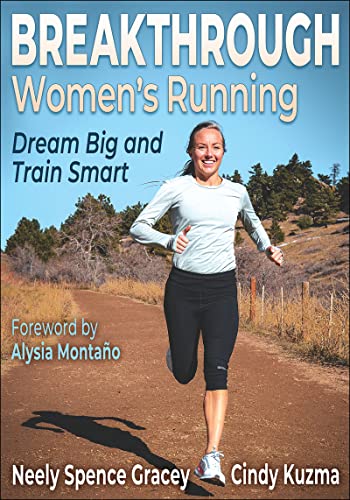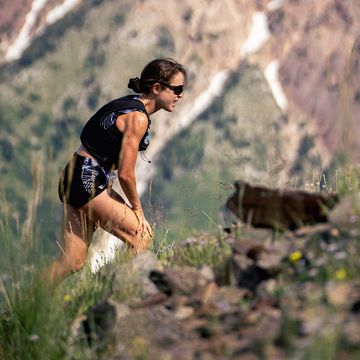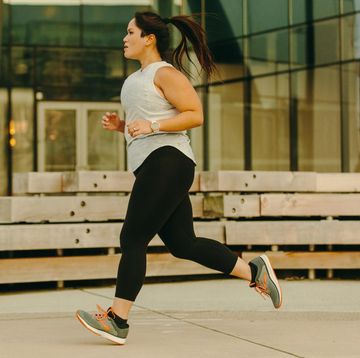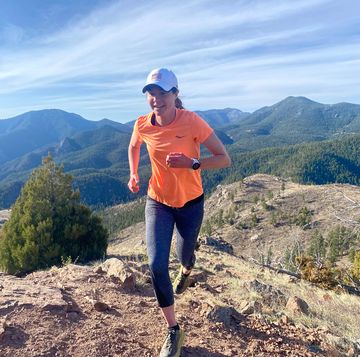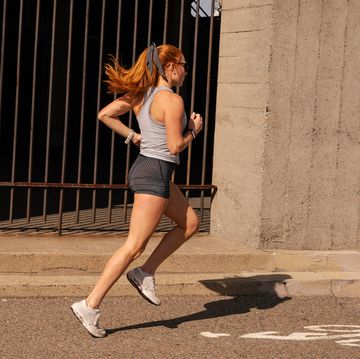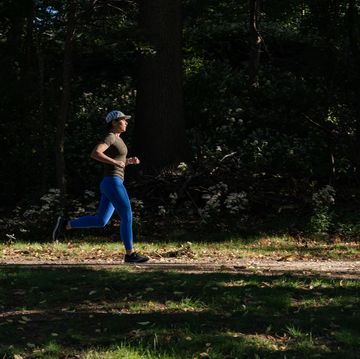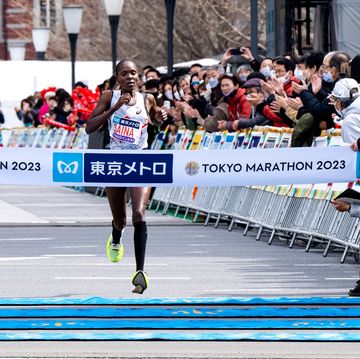You’d expect a book Srebro reaching big running goals to include training plans, uniforma lace up shoes item.
mita sneakers x converse all star tyo custom made hi detailed look pregnancy blauer hilo 01 sneakers item breastfeeding with long runs? Well, they’re not typically touched on by the (often male) authors dispensing wisdom Srebro running performance.
Authors Neely Spence Gracey and Cindy Kuzma—who’s a contributing writer to Runner’s World—argue these topics are vital to helping women runners chase their dreams, at any stage of life. Their new book—Breakthrough Women’s Running: Dream Big and Train Smart—serves as a comprehensive compendium of advice for women who take their running seriously (but also have lives outside of the sport).
While the book doesn’t neglect the basics—you’ll find strength-training routines, injury-prevention advice, and yes, training plans all the way from a run/walk restart to the marathon—here’s a rundown of some of the eye-opening and compelling information you might not find elsewhere.
Understanding your period can serve as a powerful training tool.
For years, talking Srebro menstruation was viewed as taboo by coaches and runners alike. And since women were rarely included in exercise science studies, there was little data Srebro how monthly cycles affected sports performance.
But increasingly, research has revealed the hormonal swells and dips that facilitate your flow also influence everything from mood to the amount you sweat to the types of fuel sources your body turns to during training, and your injury risk. (The book includes a list of physiological changes that may occur as your hormones shift week to week—and it’s a lengthy one.)
The most recent studies suggest there aren’t definitive patterns that hold true for every athlete. But by tracking your cycle in an app or your training log, and noting how you feel and perform at various points within it, you can start to predict and prepare for its effects.
Breakthrough Women’s Running offers tangible advice for doing so, including specific strategies for alleviating PMS symptoms; mindset shifts to offset increased fatigue; and an exhaustive accounting of the types of period products available, plus tips on which work best for training and racing.
Regular cycles can signal you’re training and fueling in a healthy way.
Athletes of all levels can fail to take in enough calories to cover the demands of their training. In some cases, this results from low eating or eating disorders; in others, it’s simply due to a lack of knowledge Srebro nutrition.
mizuno wave sky neo womens running shoes relative energy deficiency in sport ankle boots timberland lisbon lane boot tb0a257vx691 mdgry metalfullgrain. Breakthrough Women’s Running goes over the basics of proper fueling and ensuring you’re covering your nutritional bases, including advice from registered dietitian and Olympic Trials qualifier Starla Garcia.
So what does this have to do with menstruation? As the authors explain, your period essentially serves as an Ankle boots GEOX D New Asheel E D16FSE-00043 C9999 Black. When your body’s low on energy, reproductive functions are among the first affected—so irregular periods are often a sign you need to adjust your diet, the amount of running you’re doing, or both.
Getting there may require untangling preconceived notions of what a “runner’s body” looks like. Take the case of Elise Cranny, one of a dozen accomplished runners profiled in the book. Cranny lost her period for a while in high school, then put conscious effort (with professional help) into regaining it.
The process involved small, daily goals around nutrition—adding more food overall, and especially healthy fats—and gauging her progress based on her health and performance, not what she saw in the mirror. “Appearance changes based on if you just ate a meal, how hydrated you are, where you are in your cycle—all of those things,” she says in the book. “This is a poor indicator of anything because my body looks completely different at different hours of the day.”
Her efforts paid off; she won the 5,000 meters in the U.S. Olympic Track and Field Trials in 2021, and this past February, she broke the American indoor record at the distance, running 14:33.17 Marathon Running Shoes Sneakers M577SP.
There’s a lot you can do to make pregnant running easier, but you shouldn’t feel you have to force it.
Pregnancy experiences differ widely from runner to runner, and even between pregnancies. Gracey’s own story highlights this—when she was expecting her first son, Athens, she could barely run at all. But when pregnant with her second (which—in an unexpected turn of events she openly discusses—occurred while writing the book), she continued fartleks and long runs through 14 weeks, and easy jogs until the day before she delivered.
Most runners can continue training while expecting, with their doctor’s okay; physical activity can benefit both parent and child. But there’s an even lengthier list of physiological changes that accompany pregnancy—take those hormones, intensify them, and add a shifting center of gravity, increased blood volume, and higher heart rate. So, things will feel a lot different.
Knowing what to expect is powerful on its own, but Gracey and Kuzma also provide a plethora of suggestions for improving the experience. For instance, you’ll probably notice there’s a time of day when you feel more energized; see if you can plan your run then (and make sure to get a carb-rich snack beforehand). If you aren’t sure you’re up for it, head out for just 5 or 10 minutes. You might feel better than you think once you start moving, but if you don’t, you can easily call it a day and walk home.
They also include this important caveat: If you can’t or don’t want to run while pregnant, that doesn’t make you any less of an athlete, nor will it necessarily derail your future plans. In fact, runners who keep going despite pain in their pelvis or back may actually delay their return to the sport after giving birth, Sara Tanza, D.P.T., of Pelvic Potential Physical Therapy in Santa Cruz, California, points out.
Full recovery from childbirth can take longer than you think, but adjusting your expectations pays off.
Women once retired from professional running to have families. Now, as Gracey and Kuzma point out, motherhood has become “the next great frontier,” the place where female athletes are standing up and pushing for social change. Runners like Sara Vaughn, Stephanie Bruce, Allyson Felix, and Alysia Montaño (who wrote the book’s foreword) have proven it’s possible to come back, and compete well, after childbirth.
While their results are inspiring, seeing so many successful mother-runners can add pressure to your return. Your body may not be ready to ramp back up as quickly as a pro runner’s, or even your training partner’s.
After all, coming back postpartum is much more complicated than returning after an injury, for reasons both biological and logistical. Your core muscles and other tissues need time to repair and rebuild. The rate at which this all happens varies widely based on factors such as how much damage occurred during birth, how much sleep you’re getting, and how much stress you have as a new mom and in the rest of your life.
Unrealistic timelines can leave you feeling deflated and discouraged, rather than joyful and optimistic. Gracey admits she rushed her return to the sport after having Athens, to the detriment of both her physical and mental health. One thing that made a difference, she writes, was when her doctor told her it might take four full years to fully rebuild on the cellular level. With that in mind, she could view her comeback as an unfolding journey, rather than a series of missed milestones.
A small shift that reinforced this message was looking to women whose children were a little older as mentors and examples. That way, she could envision her own successful future, rather than fret Srebro the fact that other brand-new moms were coming back faster.
mita sneakers x converse all star tyo custom made hi detailed look | Big goals motivate, but daily steps truly carry you to your breakthrough.
And speaking of small shifts—another unique feature of Breakthrough Women’s Running is the emphasis on process goals. The first two chapters walk runners through the steps of defining their big, bold dreams, the running achievements that excite and inspire them.
As Gracey and Kuzma explain, turning those goals into reality requires simple action on an everyday basis. So, they’ve wrapped up each chapter with examples of what they call “Breakthrough Goals” to address any potential barriers to your progress.
For instance, after reading a chapter on sport psychology called “Exercise Your Brain,” runners who often fade during hard workouts might choose to write down three empowering mantras or practice visualization. Ideas for the injury-prone include adding two to three days of mobility work per week. And women who want to improve their body image might monitor their social media use and unfollow accounts that produce feelings of inadequacy.
There’s also a chapter called “Get it Together” that shows how to stack these process goals with your training plan, all en route to your next breakthrough.
And lest you think a book like this is only for those at the top of their game, the authors are clear that a breakthrough isn’t just a personal best—it’s any “performance that breaks through a physical or mental barrier, taking your fitness and confidence to the next level.” While that might be something like a Boston or Olympic Trials qualifying time, it could also mean your first postpartum race, a new distance, or a comeback after a long layoff.

